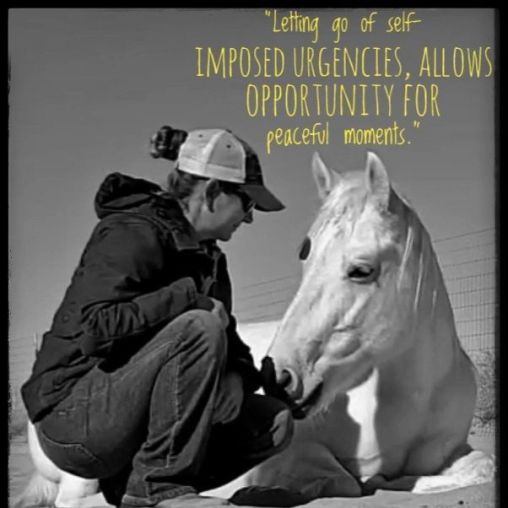Refining Your Horse Skills
Building the Horseback Riding Foundation
Alternative Horsemanship Helping Humans Understand Horses

Irrelevant to the chosen discipline, the ideal goal with each ride is to refine your horsemanship with your equine partner. This can be achieved by first creating a willing, responsive, and reasonable equine partner. If riders learn how to prioritize their mental focus they can accurately assess and address their horse.
Below is an initial checklist for before, during, and after the interaction with the horse. The answers can help clarify missing pieces in the communication. Equine enthusiasts need to learn how to assess what, who, when, where, and why scenarios occur with the horse to refine the partnership.
What: This is a combination of evaluating, considering, and attempting to gauge the mental and physical status of the horse from the beginning to end of the interactions, whether from feeding to after a ride. The assessment will help define what needs to be addressed or help human adapt their expectations.
Who: The Human- Before starting with the horse, the rider needs to assess their attitude, and emotional, and physical state. If distracted, stressed, or have time constraints, it will affect their focus. If they are not 100% mentally present, it is unfair to ask that of the horse. Horses are hyper-aware, including their sensitivity to a person's mental, emotional, and physical energy, which they often mirror in their behaviors.
Who: The Horse - Where is his mind? Is his brain with his buddies? How does he look physically? Is he stiff or sore from age, health, or earlier exertion? Has he recently had farrier care, vaccinations, on medications, chiropractic adjustments, or anything else that would affect him physically? Has his diet changed, or is he bothered by gut health issues? Is he emotionally stressed, fixated, or fearful?
When: The assessment should begin as the horse is being caught. Did he willingly offer to do so (without treats)? Did he turn away but tolerate being caught, or did he run away?
Where: As the gate or stall door is being closed, did his attention stay present, or was he distracted looking for food?
While he is led, does he walk slow/fast, or is he heavy on the lead rope? In the grooming area, is he distracted by the other horses or activities? Does he hover in a person's personal space? Did he softly versus obediently stand when tacked up? Is he anxious and fidgeting as the tacking progressed?
Why: Each piece of the human/horse interaction affects the next. By the time he is ready to mount, the horse will have communicated his mindset. If displaying distracted, bothered, fixated, defensive, etc., behavior while handled on the ground, this will transfer over into the ride quality.
The horse's initial mental concerns when handled from the ground will not be diminished by demanding physical exercise of him when he is ridden. Instead, this human response teaches the horse to become defensive towards the rider, and/or he will learn to shut down mentally or potentially become increasingly physically resistant.
The assessment continues when riding to improve addressing what the horse needs support with on that particular day. Here are the foundational elements necessary to accomplish any equine-related goal with quality:
The Horse
Softness- the horse's mental and physical willingness to follow or yield to physical pressure communicated via the rider's aids (hands, seat, legs, and energy).
Suppleness- relaxation throughout the horse's body allowing him to independently move body parts without losing his softness.
Relaxation- the horse's ability to focus on the physical task without retaining tension in his body.
Engagement- the lifting of the horse's back to enable his hindquarters to step underneath his spine with a majority of his weight on his hind end. This allows soft and independent movement in his head, neck, shoulders, ribcage, and hocks.
Balance- the horse's ability to carry his weight consistently by engaging his hindquarters without leaning on the rider's hands.
Responsiveness- the brief reaction time to mentally and physically respond to the human.
Effectiveness- how quickly and softly the horse's response is towards minimal aid from the rider.
Adaptability- the willingness of the horse to let go of one thought and focus on another followed by a soft physical response.
Awareness- the horse's ability to stay present in his surroundings but prioritize his focus on the human.
The Rider
Evaluation- recognizing what the initial intent was, what aids were used to communicate, how the horse responded, and if follow-through was necessary to help him achieve a softer, more willing response.
Feeling- not relying solely on what they are seeing, but re-sensitizing what they are feeling in the horse's movement and energy to improve the timing of their aids.
Adaptability- the rider's ability to offer a varying degree of energy in their aids and communication with the horse. Also, their ability to adapt the moment's goal to best support the horse.
“Taking” the horse for the ride- proactively communicating specifics of the desired response versus reactively critiquing the horse due to lack of initial guidance from the human.
By raising their standard of intention, clarity, and specificity, Alternative Horsemanship with Samantha Harvey can help horseback riders learn how to assess themselves and their horse contributing towards improving their horsemanship, becoming a positive and supportive leader for their equine partner, and building a mutually respectful partnership.

